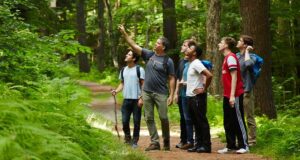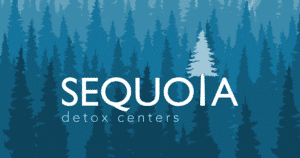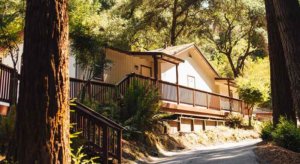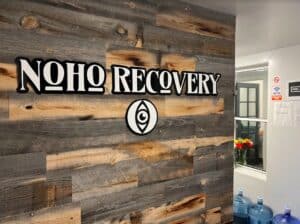Salvia Addiction And Abuse
What Is Salvia?
Salvia, or Salvia Divinorum, is a plant native to Oaxaca, Mexico, used in spiritual and divination practices. The plant belongs to the Lamiacae family and has the flavor composition of mint, vibrant purple stems, and a distinct aroma. Salvia goes by many names:
- Sally-D
- Maria Pastora
- Magic Mint
- Diviner’s Sage
- Sheperdess’ Herb
- Diviner’s Mint
- The Female
- Sage Of The Seers
In addition to its spiritual uses, the drug is also used recreationally to achieve hallucinations. Some have compared its effects to that of LSD due to Salvia’s active ingredient, salvinorin A, which provides hallucinogenic effects comparable to the kind LSD produces. Salvia is considered a Schedule I controlled substance in many states, meaning it has a high potential abuse and no legitimate medical purpose, although it’s legal in some jurisdictions.
Online Addiction Counseling
Get professional help from an online addiction and mental health counselor from BetterHelp.
- Access to Therapy 24/7
- Easy Online Scheduling
- 20,000+ Licensed Therapists
Paid Advertising. We may receive advertising fees if you follow links to the BetterHelp site.
How Is Salvia Used?
Salvia is available in the form of a green plant or a liquid and can be smoked or chewed. The leaves are dried and can be smoked in pipes, similarly to Marijuana. The result is a rapid-onset and short-lived high that may begin within minutes of consumption and generally lasts around 30 minutes. Users typically experience the most intense effects within 2 minutes of smoking, but these usually fade within 20 minutes. Salvia use is known for causing noticeable changes in perception.
When Salvia is chewed, the leaves secrete chemical components of salvinorin A. These are absorbed through the oral mucosa, creating visual hallucinations and altered states of cognition that last from 1 to 2 hours. When in liquid form, Salvia can be combined with other liquids. Another common method of use is crushing the leaves and mixing them into drinks or vaporizing the herb.
Signs Of Salvia Dependence
A Salvia dependence can occur due to the plant’s effects on the mind. The active ingredient, salvinorin A, attaches to the Opioid receptors in the brain. Acting at the KOR, or kappa Opiate receptor site, the compound alters the user’s ability to perceive reality. People may find the herb appealing because of the hallucinations it produces.
If someone has to use more of the drug to feel the same effects, this can indicate a problem. For instance, using more than the safe dose of 1 gram could show that someone has developed a tolerance to the effects of Salvia. Drug tolerances occur gradually and often transition into substance use disorders.
A dependence is also marked by someone craving the substance when they reduce or stop their use. They may feel mild, uncomfortable symptoms like irritability and anxiety. To combat these feelings, they may continue using Salvia.
Signs that may indicate Salvia abuse include:
- Taking more and more of the drug each time (tolerance)
- Using on a daily basis
- Using other drugs in combination
- Problems at school, work, or home
- Increased secrecy or social isolation
- Mood swings and unpredictable behaviors
- Eating more or less
- Sleeping or being awake at odd times
- Increased injuries, accidents, or risky behaviors
- Decreased interest in physical appearance
- Trouble concentrating or remembering things
Short-Term and Long-Term Effects Of Salvia
Considered the strongest natural Hallucinogen, Salvia has both short-term and long-term effects. The hallucination-inducing effects on the brain are one of the trademarks of the substance. Many may notice physiological and psychological effects such as:
- Floating
- Loss of touch with reality
- Vivid colors and unusual patterns
- Perception of levitating
- Depersonalization (body feeling connected to the space around them)
- Temperature changes in the body (chills)
- Slurred speech
- Talkativeness
- Nausea
- Uneasiness
- Dizziness
- Irregular heartbeat
Looking for a place to start?
Join the thousands of people that have called a treatment provider for rehab information.
Free and confidential
Available 24/7
Access to professional treatment
There are several studies concerning the long-term effects of Salvia. Some sources reveal long-term use can lead to problems with cognition, both with learning and long-term memory function. Anxiety is another long-term effect. Individuals suffering “bad trips” would have problems adjusting to a grounded reality and could struggle with feeling relaxed.
In rare cases, some may endure psychotic side effects and have trouble adjusting to reality. If people combine salvia with other chemicals like alcohol or Stimulants, there is a higher risk of complication and even overdose. Don’t hesitate to get help.
Check if my insurance covers rehab
Addiction Center is not affiliated with any insurance.
Salvia’s Legal Standing
Because of Salvia’s potent side effects it’s been deemed dangerous, resulting in its illegal status in many states. If someone is found using the drug in a state where it’s illegal, they can suffer 5 years of prison time. Salvia is legal in states such as California and Maine. Some states, like Florida, previously allowed use without restriction but have since made the substance illegal. Missouri, Oklahoma, and Delaware have ruled Salvia a Schedule I controlled substance. Wisconsin prohibits the selling and manufacturing of Salvia, which is punishable by up to $10,000 in fees.
Get Help Today
Salvia has potentially damaging effects that can last a lifetime. If you or a loved one struggles to taper use, or finds they need more to cope, there is help available. Contact a treatment provider today. They can provide helpful details on facilities and treatments to help those battling a Salvia dependency.
Published:
Author
Krystina Murray

-
Krystina Murray has received a B.A. in English at Georgia State University, has over 5 years of professional writing and editing experience, and over 15 years of overall writing experience. She enjoys traveling, fitness, crafting, and spreading awareness of addiction recovery to help people transform their lives.
- More from Krystina Murray
Reviewed by Certified Addiction Professional:
Theresa Parisi

Theresa Parisi is a Certified Addiction Professional (CAP), Certified Behavioral Health Case Manager (CBHCM), and International Certified Alcohol and Drug Counselor (ICADC) with over 12 years of experience in the addiction treatment field.
- More from Theresa Parisi
Sources


Recovery Starts Today
Call Now For Addiction Support



Newport Academy – Teen Rehab Center
Port Townsend , WA


Sequoia Detox Centers
Spokane Valley , WA


Moonlight Mountain Recovery – Nampa
Nampa , ID

Bayside Marin Treatment Center
San Rafael , CA

Newport Institute for Young Adults
Sunol , CA

The Camp Recovery Center
Scotts Valley , CA

Moonlight Mountain Recovery
Pocatello , ID


Tarzana Recovery Center – TRC
Tarzana , CA



Hollywood Hills Recovery
Los Angelos , CA